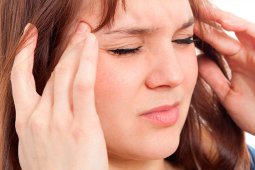Do Women have a Higher Risk of Stroke?
Apr 19, 2022
Stroke as a disease is the third leading cause of death (first two are heart disease and cancer) and it is also a leading cause of disabilty. Looking at data on the basis of gender, it is the third leading cause of death for women. Also every 1 in 5 men can suffer from an episode of stroke in his lifetime.
Stroke affects men early and women later :
Risk of stroke approximately doubles for each decade of life after the age of 55. During most of the life span, men have a higher incidence of stroke than women, but over the age of 75 years the incidence becomes much higher in women than men. The union ministry of health and family welfare show that life expectancy for men and women in India are 67.3 years and 69.6 years respectively, which means stroke causes an excess of disability and mortality in older women.

Risk factors of stroke in women:
Most of the risk factors for stroke are same in women as in men like high blood pressure, diabetes, smoking, inactivity and high cholesterol, but there are some unique risk factors in women.
- Pre-Eclampsia: Women who develop preeclampsia (pregnancy associated hypertension) have a 60% greater risk of non-pregnancy-related ischemic stroke, compared to women without a history of pre-eclampsia.
- Migraines: Migraine is more common in women compared to men and those who have migraine have double the risk of stroke. It can go up to 10 times if migraine is present with visual aura.
- Oral Contraceptives: Oral contraceptives (birth control pills) increase the risk of stroke marginally. However, it increases many fold in women who smoke, have high blood pressure, migraines or blood clotting disorders.
- Hormone Replacement Therapy (HRT): Although most women who take HRT will not have a stroke; Women who take estrogen and progesterone in HRT for less than two years have a 40% higher risk.
- Atrial Fibrillation/Rhematic heart disease (RHD): It is more common in women than men and it quadruples the risk of stroke. Rheumatic heart disease is still common in India with prevalence rate of 1.23/1000 in male and 2.07/1000 in the female population of all age groups. Cardio-embolic stroke is seen in more women due to high prevalence of RHD in this group.
Conclusion:
Year by year, longevity of population is increasing and as the population ages, the incidence rate of stroke in women will continue to increase. Apart from this women are more likely to be disabled after stroke than men. Disparity may result from the older age and poorer pre-stroke functional status of women than men at the time of stroke onset; Differences in hormone exposure, social networks, and comorbid function may also contribute to these sex differences in functional recovery.









